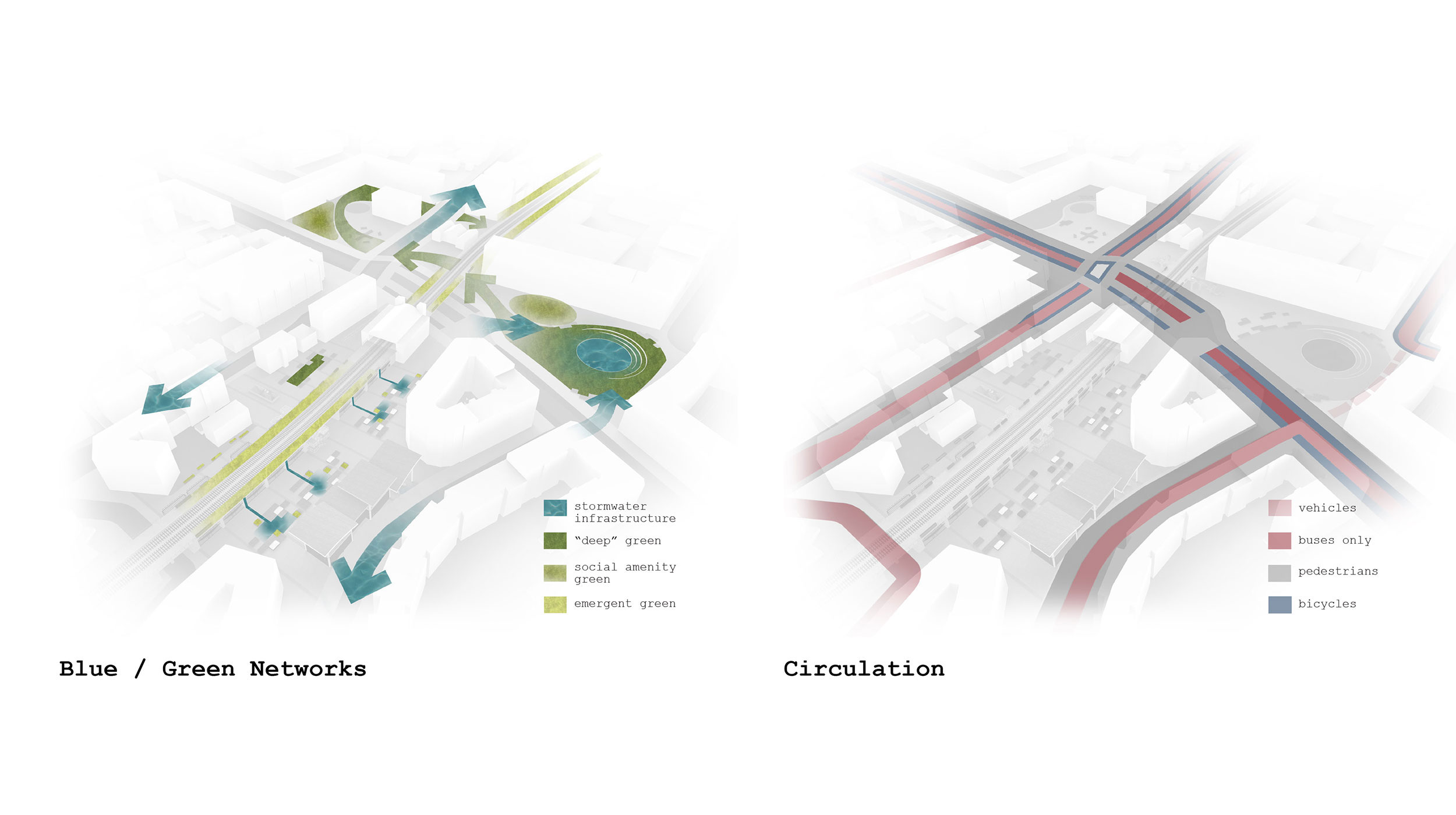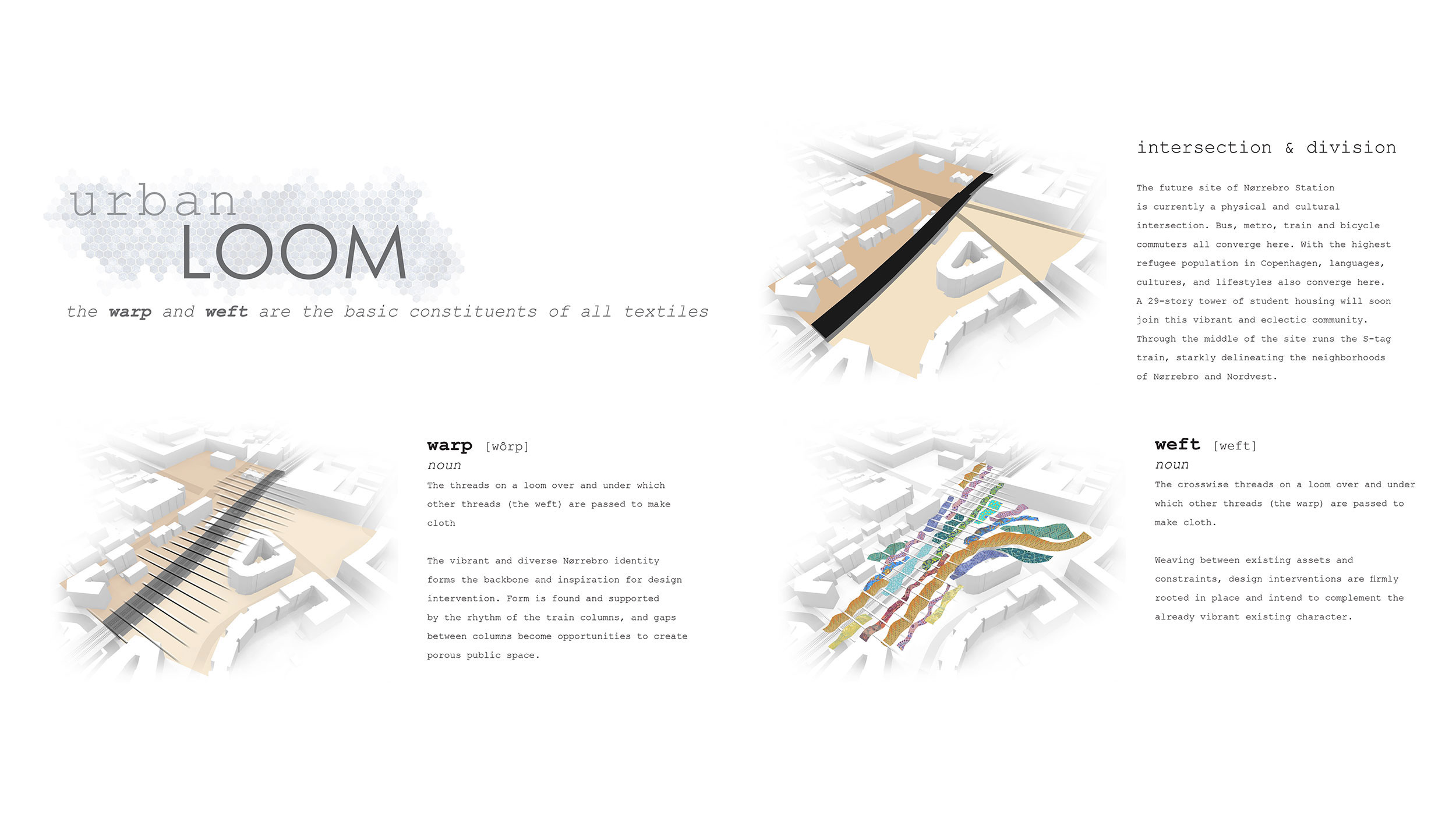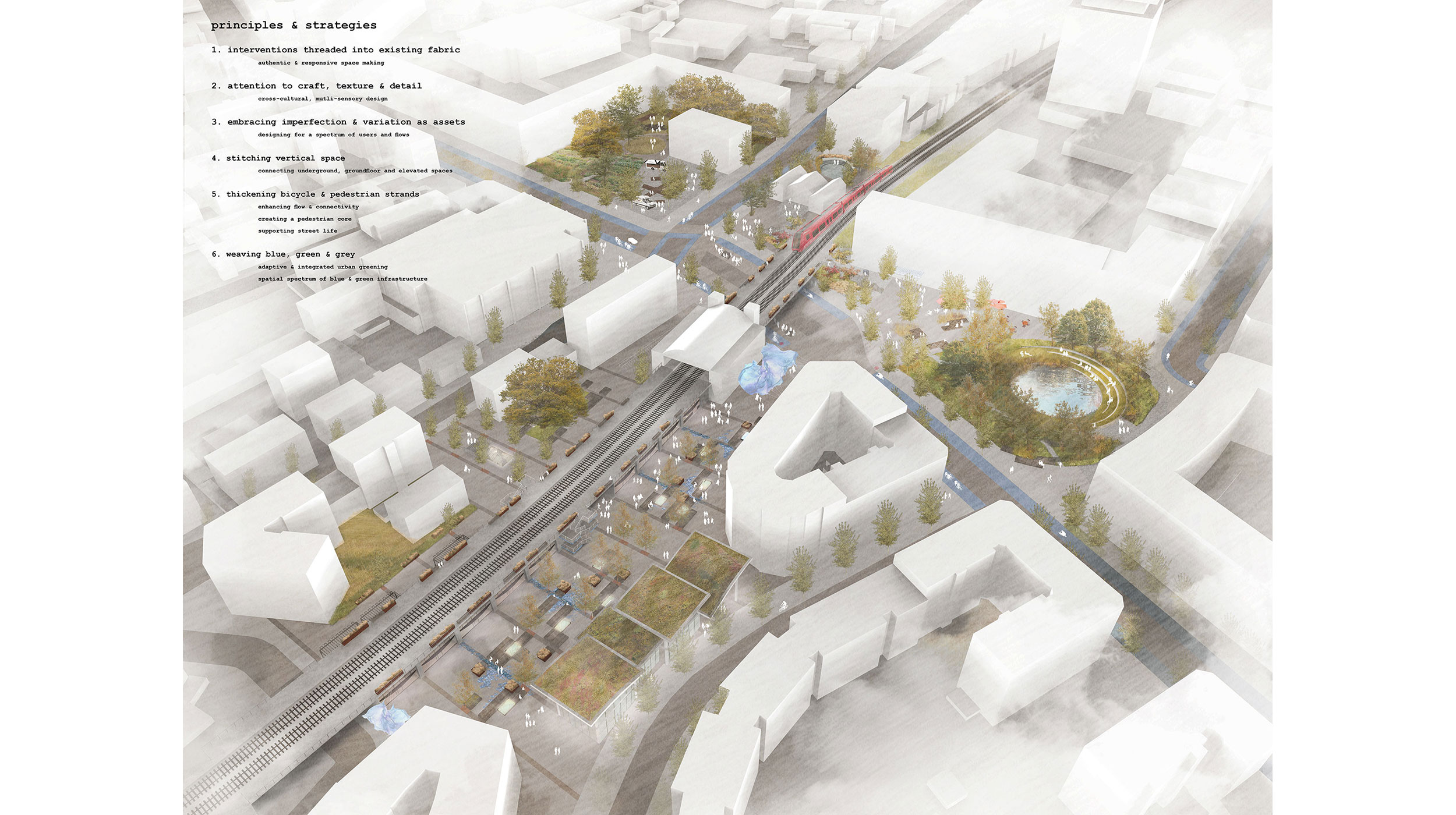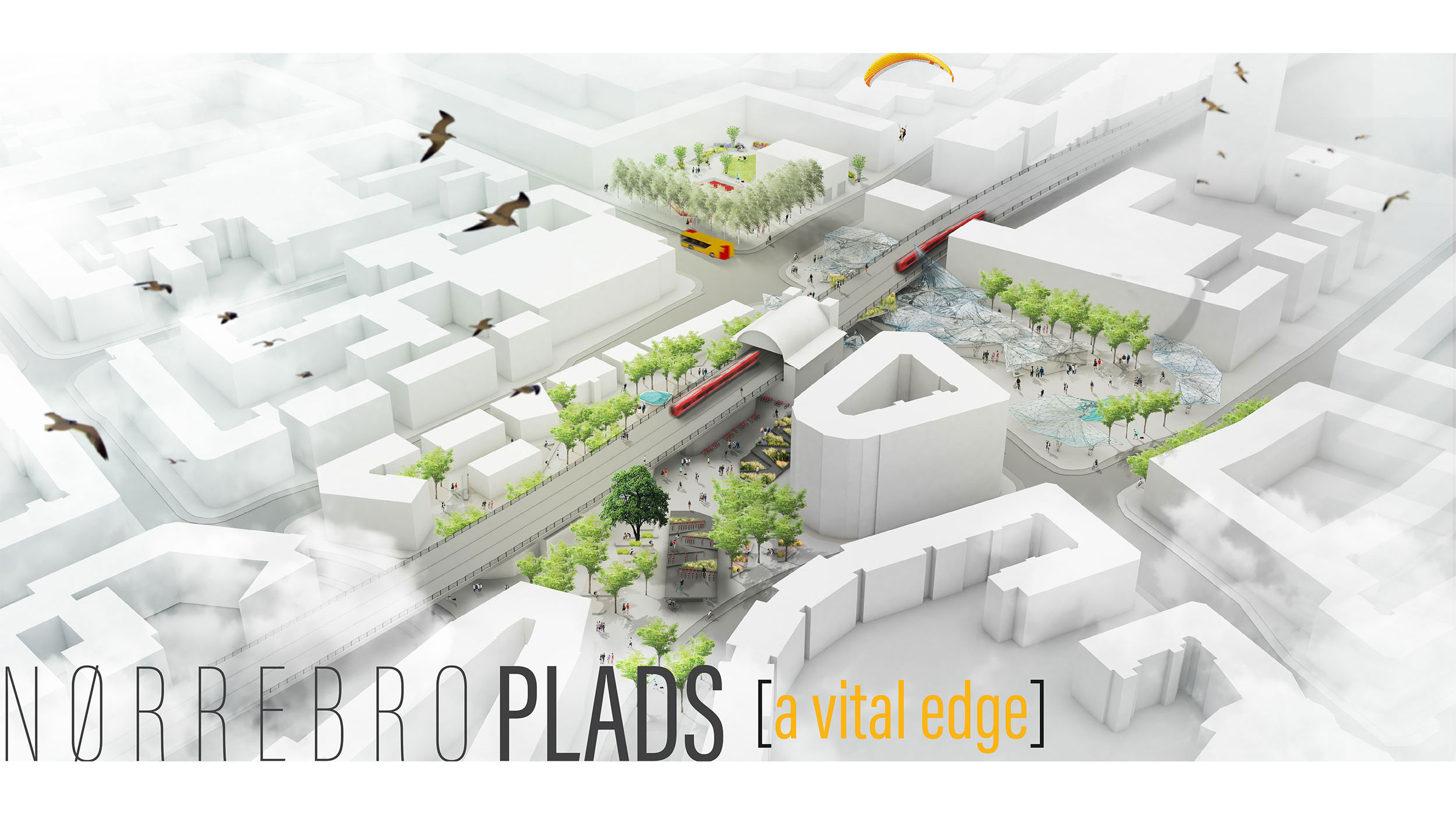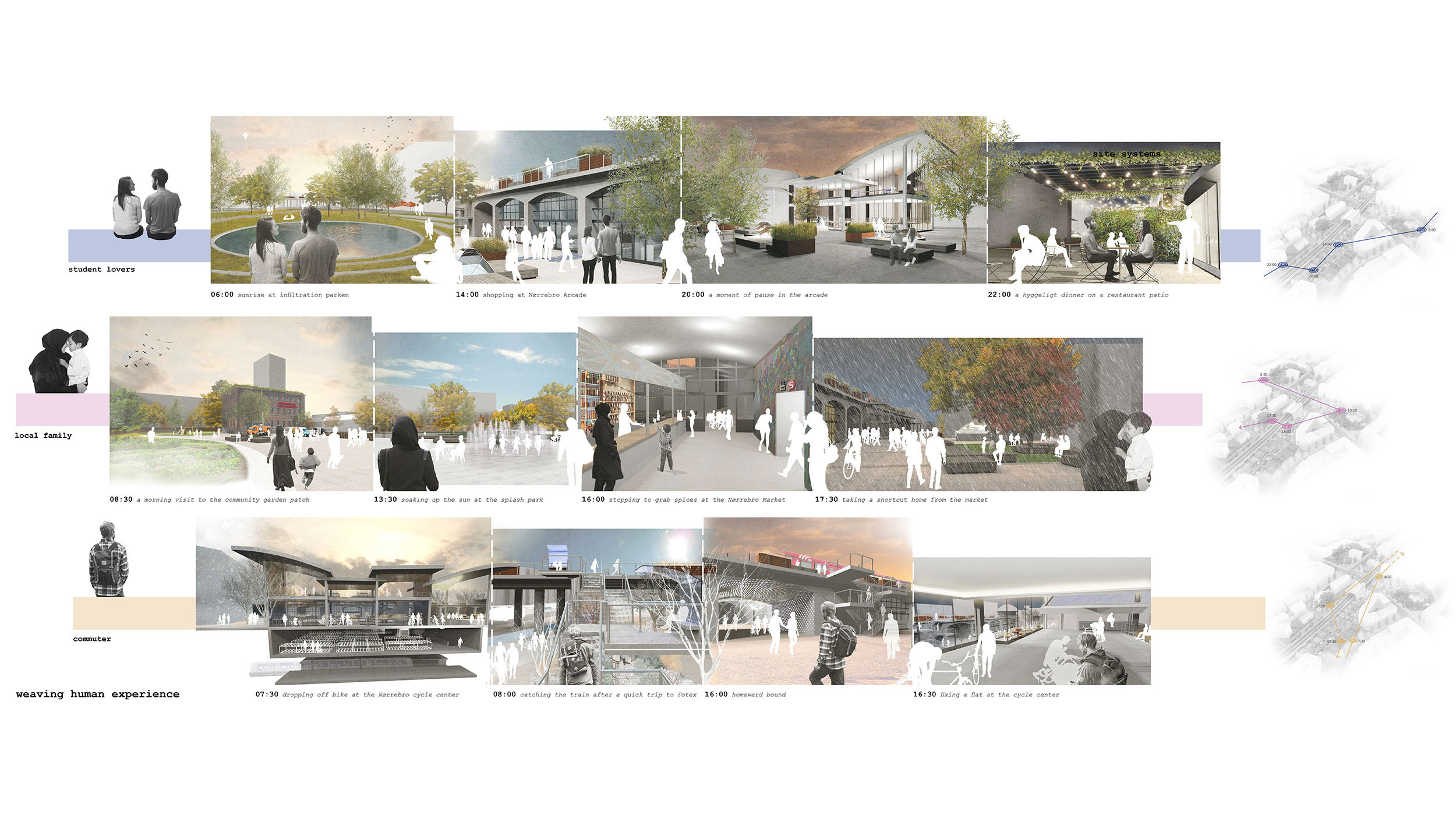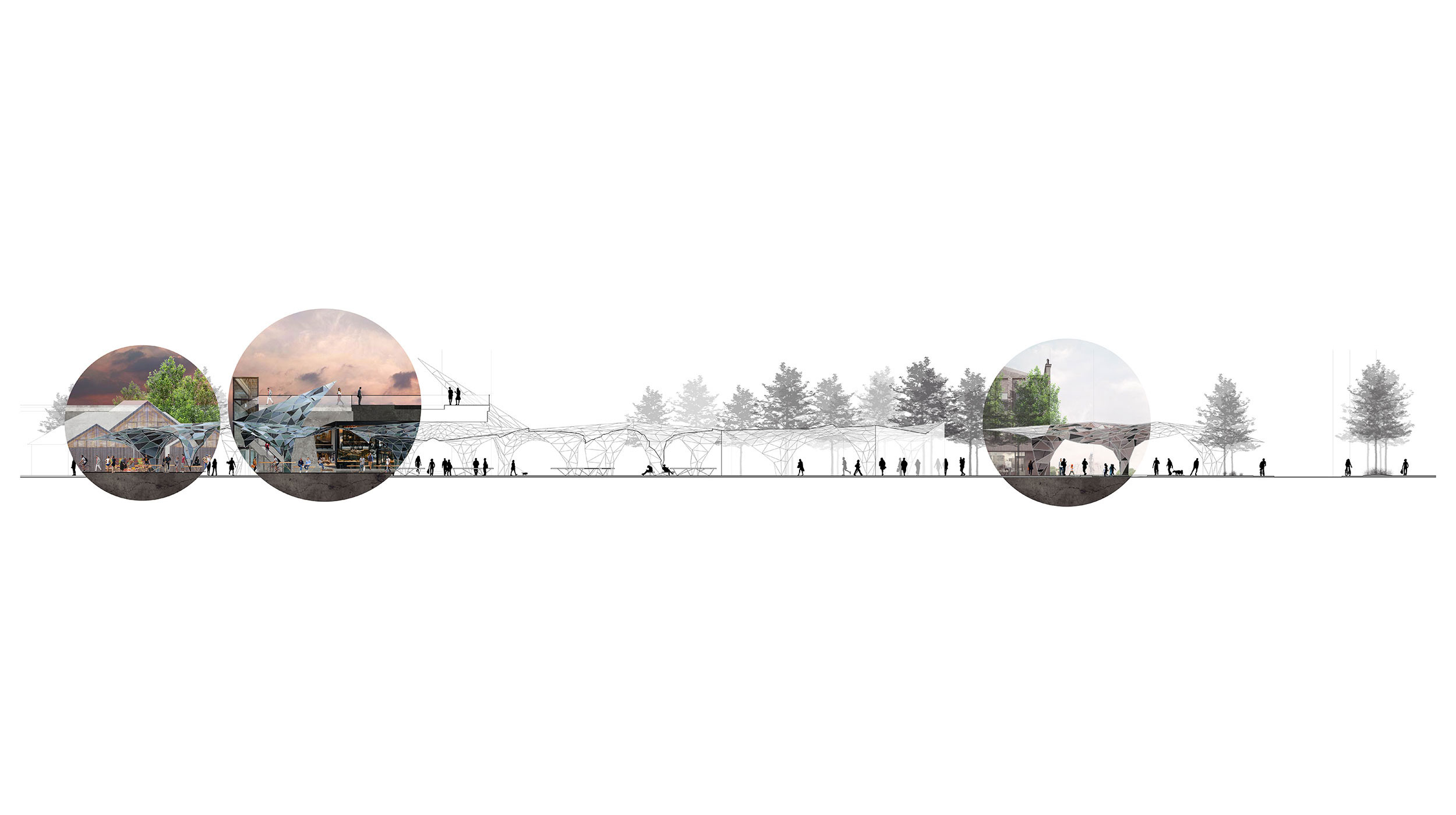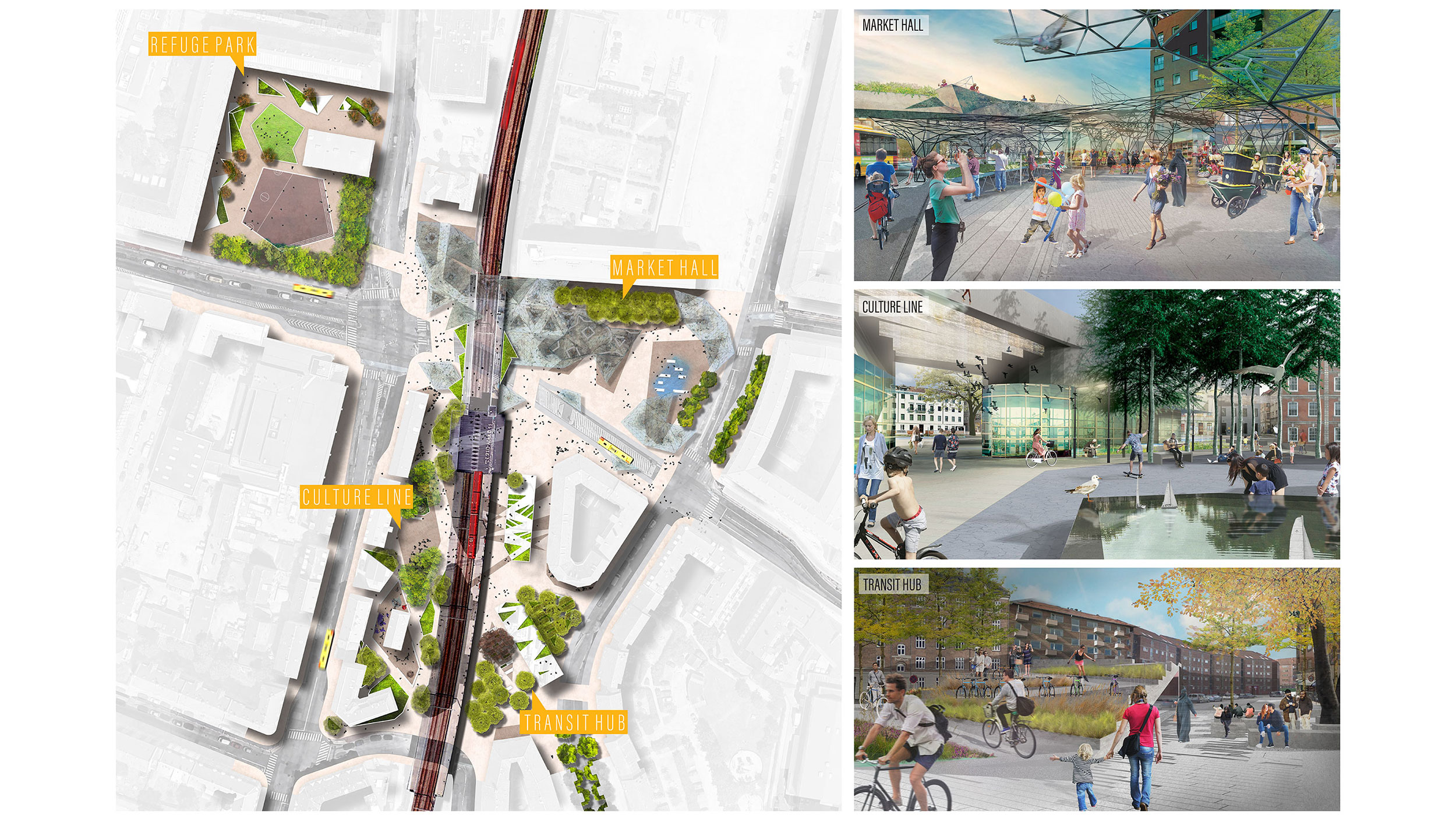Course Instructors
Course Date
Autumn 2016
Course Type
Advanced Graduate Studio
Course Description
The City of Copenhagen is currently focusing on three primary initiatives: urban renewal for select identified neighborhoods; climate adaptation interventions to alleviate flooding, heat island, and biodiversity impacts; and incorporation of urban nature – with integration of these three initiatives as an overarching goal.
For the 2016 Scan|Design Master Studio we worked with these objectives in mind, on a Copenhagen district and site surrounding an existing and expanding transit hub for the “S” commuter train, new Metro, major bus stop, and bicycle superhighway. The intersection also serves as a cultural, community gathering, and shopping center for the surrounding population, comprised of a changing mix of immigrants, gypsies, students, and ethnic Danes. We applied site program ideas from our travels, including studies of transit centers, “cloudburst” (stormwater) management approaches, cultural facilities, streets and bicycle infrastructure, markets, parks and gardens. Guided by principles developed by Gehl Architects, and their offspring of Schulze + Grassov, we considered approaches to cultivate and enrich public life — both moving through, and staying in, the public realm of streets, plazas, markets and leftover spaces of this site. Additionally, we worked at district, site and detail scales to use urban design to address climate change impacts, through:
• addressing social and cultural needs and amenities to cultivate social resilience
• exploring opportunities to insert urban nature for biodiversity resilience and human health; and
• artfully integrating water into the cityscape for hydraulic function and human
delight.
During the term, our Master Studio benefited from the involvement of Louise Grassov, formerly with Gehl Architects and now with her own firm, Schulze + Grassov. Throughout the quarter, we reflected upon the Copenhagen study tour by referenced examples from our travels while employing and expanding on Gehl’s and Shulze + Grassov’s public life / public space principles.
